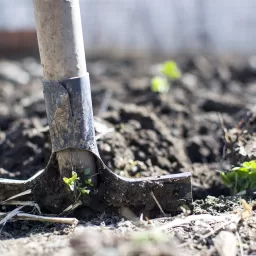A Brief History Of Hydroponics
The study of crop nutrition began thousands of years ago. The earliest published work on growing terrestrial plants without soil was the 1627 book, Sylva Sylvarum by Sir Francis Bacon, printed a year after his death.
Water culture became a popular research technique after that. The word ‘Hydroponics’ was coined by Dr. W.F. Gericke in 1936 to describe the cultivation of edible and ornamental plants grown in a solution of water and dissolved nutrients.
It literally means working water; ‘hydro’ meaning ‘water’ and ‘ponos’ meaning ‘labour’. Many civilizations have utilized hydroponic growing techniques throughout history. For example, the hanging gardens of Babylon and the floating gardens of the Aztecs of Mexico and those of the Chinese. All these are superb examples of Hydroponic culture.
The Hanging Gardens of Babylon were built around 600 BCE by King Nebuchadnezzar for his wife, Queen Amyitis who was homesick for the mountains of her homeland in Media, Persia.
The ruins lie in the long since gone ancient city of Babylon, which was near the modern city of Baghdad in Iraq. The gardens were a very beautiful structure, using advanced hydroponic technology. Babylonian engineers designed an advanced system of shafts to carry buckets of water continuously. The water carried in the buckets filled the fountains and pools in the Garden. The energy to allow this was supposedly supplied by slaves turning massive screws. This well system was the first and only one of its kind in Babylon.
Hieroglyphic records from Egypt dating back several hundred years B.C. describe the growing of plants in water. Hydroponics is hardly a new method of growing plants. However, much development and improvement has been made over the years in this innovative area of horticulture, and agriculture.
In 1699, John Woodward published his water culture experiments. He found that plants in less pure water sources grew better than plants in distilled water. By 1842 a list of nine elements believed to be essential to plant growth had been made out, and the discoveries of the German botanists, Julius von Sachs and Wilhelm Knop, in the years 1859-65, resulted in a development of the technique of soil less cultivation.
Growth of terrestrial plants without soil in mineral nutrient solutions was called solution culture. It quickly became a standard research and teaching technique and is still widely used today. Solution culture is now considered a type of hydroponics where there is no inert medium.
Throughout the last century, scientists and horticulturists experimented with different methods of hydroponics. One reason behind the drive to develop hydroponics was the need for growing fresh produce in non-arable areas of the world. Today, it is a well know fact that in some parts of the world, plant life does not grow in the available soil.
During the Second World War, troops stationed on non-arable islands in the Pacific were supplied with fresh produce which was grown in locally established hydroponic systems.
Later in the century, hydroponics was integrated into the space program in the USA. Hydroponics is NASA’s solution to provide a self sufficient food source for future space stations and proposed visitors to Mars. The administration has sponsored a research program called Controlled Ecological Life Support System (CELSS) in order to further develop hydroponics technology and carry it into the future.
When NASA considered the practicalities of locating a society on another planet or on the Earth’s moon, hydroponics helped to fulfill the answer to this plan. In fact, NASA have a list of 15 plants, grown using hydroponics that will save your life (should the need ever arise).
By the 1970s, it wasn’t just scientists and analysts who were involved in hydroponics. Traditional farmers and eager hobbyists became attracted to the virtues of hydroponic growing.
In 1978, hydroponics pioneer Dr. Howard Resh published the first edition of his book; Hydroponics Food Production. This book spurred what has become known as the 3-part base nutrients formula that is still a major component of today’s hydroponics gardening.
Resh later went on to publish other books, and is currently in charge of a highly advanced hydroponics research and production facility in the Caribbean.
Some of the reasons why hydroponics is being adapted around the world for food production include:
- No soil is needed
- Water stays in the system and can be reused, lowering water costs
- It is possible to control the nutrition levels in their entirety lowering nutrition costs
- No nutrition pollution is released into the environment because of the controlled system
- Stable, safe and high yields
- Pests and diseases are easier to get rid of than in soil because of the container’s mobility
Today, commercial growers are utilising hydroponics more than ever before. The ideals surrounding these growing techniques touch on a number of subjects that most people care about today such as helping to end world hunger and making the world cleaner.
In addition to the extensive research that is going on, everyday people from all over the world have been building or buying their own systems to grow good-tasting, fresh food for their family and friends and ambitious individuals are striving to make their dreams come true by making their living in their backyard greenhouse, or attic, and selling their produce to local markets and restaurants.
For others, hydroponics allows them to build impressive ‘vertical’ gardens, that would otherwise be impossible using traditional soil based methods.
In fact, most of the plant and flower arrangements you see nowadays in large office apartments are displayed using hydroponic systems. It makes feeding the system so easy, ensuring healthy looking all-year-round displays.
George Pattenson
vertical garden
#History #Hydroponics
Will be pleased to have you visit my pages on social networking .
Facebook page here.
Twitter account is here.
Linkedin account here
Post byBedewy for info askme VISIT GAHZLY






